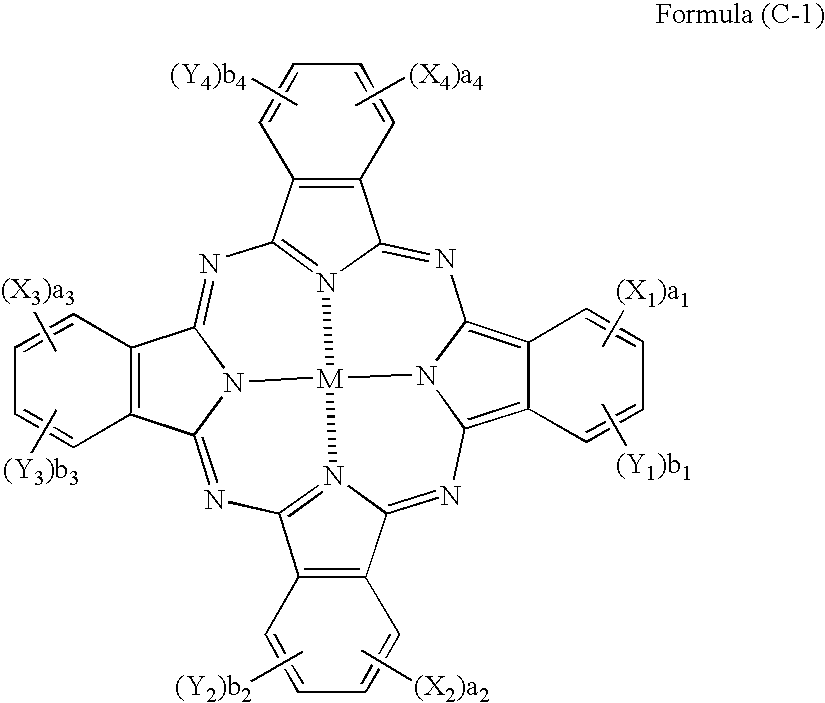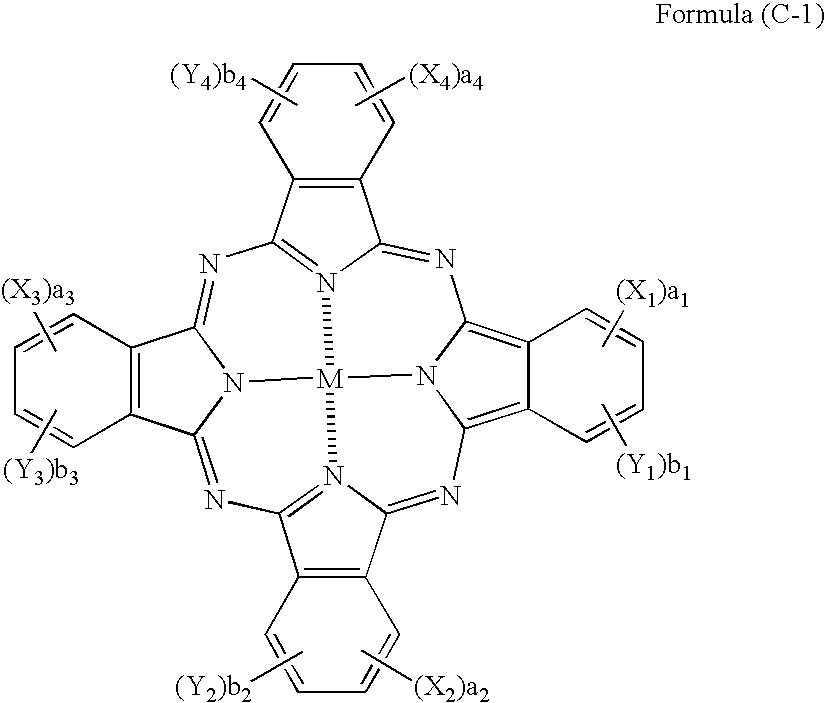Inkjet recording method
a recording method and technology of inkjet, applied in the direction of inks, coatings, printing, etc., can solve the problems of reducing bronzing, light fastness and ozone resistance of the recorded image, and unable to increase the print density and reduce bronzing
- Summary
- Abstract
- Description
- Claims
- Application Information
AI Technical Summary
Benefits of technology
Problems solved by technology
Method used
Image
Examples
example 1
Inkjet Recording and Evaluation
[0394]Inkjet recording was carried out on the inkjet recording media produced above using an inkjet printer (trade name: PM-A820, manufactured by Seiko Epson Corporation), and the following evaluation was carried out. The inkjet recording was carried while replacing a cyan ink of an ink set for PM-A820 with the ink A prepared above. More specifically, the inkjet recording was carried out using an ink set having a combination of yellow ink “Y (A820)”, magenta ink “M (A820)”, cyan ink “C (ink A)”, and black ink “K (A820)” as shown in Table 2.
[0395]The evaluations results are shown in Table 2-1.
[0396]Bronzing
[0397]A cyan solid image was printed in an atmosphere of a temperature of 13° C. and a humidity of 65% using an inkjet printer (trade name: PM-A820, manufactured by Seiko Epson Corporation) except for changing a cyan ink of an ink set for PM-A820 to the above-prepared ink A). The printed cyan solid image was observed under a fluorescent lamp, and bron...
example 2
[0413]An inkjet recording medium was fabricated in the same manner as in Example 1, except that the aqueous solution of zirconium acetate (ZIRCOSOL ZA-30, manufactured by Dai-ichi Kigenso Kagaku Kogyo Co., Ltd.) was removed from the lower layer coating liquid. The evaluation was performed in the same manner as in Example 1. The evaluation results are shown in Table 2-1 below.
example 3
[0414]An inkjet recording medium was fabricated in the same manner as in Example 1, except that the cationic polyurethane dispersion (SUPERFLEX 650-5, manufactured by Dai-ichi Kogyo Seiyaku Co., Ltd.), was removed from the lower layer coating liquid. The evaluation was performed in the same manner as in Example 1. The evaluation results are shown in Table 2-1 below.
PUM
| Property | Measurement | Unit |
|---|---|---|
| particle size | aaaaa | aaaaa |
| glass transition temperature | aaaaa | aaaaa |
| particle size | aaaaa | aaaaa |
Abstract
Description
Claims
Application Information
 Login to View More
Login to View More - R&D
- Intellectual Property
- Life Sciences
- Materials
- Tech Scout
- Unparalleled Data Quality
- Higher Quality Content
- 60% Fewer Hallucinations
Browse by: Latest US Patents, China's latest patents, Technical Efficacy Thesaurus, Application Domain, Technology Topic, Popular Technical Reports.
© 2025 PatSnap. All rights reserved.Legal|Privacy policy|Modern Slavery Act Transparency Statement|Sitemap|About US| Contact US: help@patsnap.com



